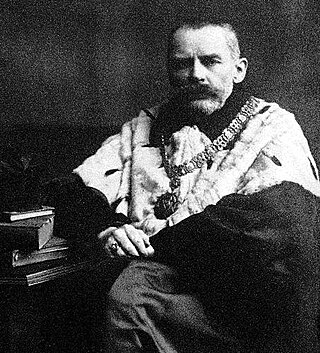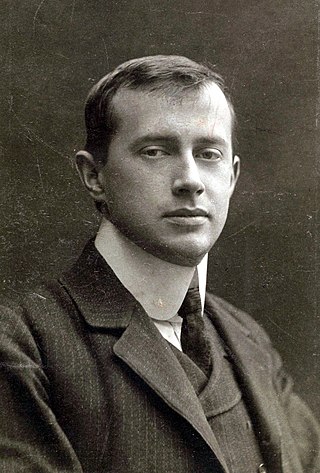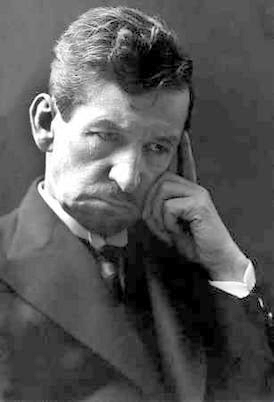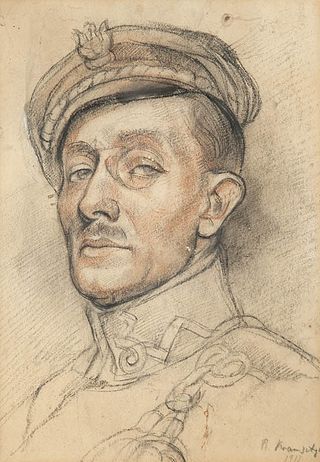
Stefan Banach was a Polish mathematician who is generally considered one of the 20th century's most important and influential mathematicians. He was the founder of modern functional analysis, and an original member of the Lwów School of Mathematics. His major work was the 1932 book, Théorie des opérations linéaires, the first monograph on the general theory of functional analysis.

Wacław Franciszek Sierpiński was a Polish mathematician. He was known for contributions to set theory, number theory, theory of functions, and topology. He published over 700 papers and 50 books.

Kazimierz Kuratowski was a Polish mathematician and logician. He was one of the leading representatives of the Warsaw School of Mathematics. He worked as a professor at the University of Warsaw and at the Mathematical Institute of the Polish Academy of Sciences. Between 1946 and 1953, he served as President of the Polish Mathematical Society.

Hugo Dyonizy Steinhaus was a Polish mathematician and educator. Steinhaus obtained his PhD under David Hilbert at Göttingen University in 1911 and later became a professor at the Jan Kazimierz University in Lwów, where he helped establish what later became known as the Lwów School of Mathematics. He is credited with "discovering" mathematician Stefan Banach, with whom he gave a notable contribution to functional analysis through the Banach–Steinhaus theorem. After World War II Steinhaus played an important part in the establishment of the mathematics department at Wrocław University and in the revival of Polish mathematics from the destruction of the war.
Stanisław Saks was a Polish mathematician and university tutor, a member of the Lwów School of Mathematics, known primarily for his membership in the Scottish Café circle, an extensive monograph on the theory of integrals, his works on measure theory and the Vitali–Hahn–Saks theorem.
Juliusz Paweł Schauder was a Polish mathematician known for his work in functional analysis, partial differential equations and mathematical physics.

The Lwów school of mathematics was a group of Polish mathematicians who worked in the interwar period in Lwów, Poland. The mathematicians often met at the famous Scottish Café to discuss mathematical problems, and published in the journal Studia Mathematica, founded in 1929. The school was renowned for its productivity and its extensive contributions to subjects such as point-set topology, set theory and functional analysis. The biographies and contributions of these mathematicians were documented in 1980 by their contemporary, Kazimierz Kuratowski in his book A Half Century of Polish Mathematics: Remembrances and Reflections.
Warsaw School of Mathematics is the name given to a group of mathematicians who worked at Warsaw, Poland, in the two decades between the World Wars, especially in the fields of logic, set theory, point-set topology and real analysis. They published in the journal Fundamenta Mathematicae, founded in 1920—one of the world's first specialist pure-mathematics journals. It was in this journal, in 1933, that Alfred Tarski—whose illustrious career would a few years later take him to the University of California, Berkeley—published his celebrated theorem on the undefinability of the notion of truth.
The Kraków School of Mathematics was a subgroup of the Polish School of Mathematics represented by mathematicians from the Kraków universities—Jagiellonian University, and the AGH University of Science and Technology–active during the interwar period (1918–1939). Their areas of study were primarily classical analysis, differential equations, and analytic functions.

Stanisław Zaremba was a Polish mathematician and engineer. His research in partial differential equations, applied mathematics and classical analysis, particularly on harmonic functions, gained him a wide recognition. He was one of the mathematicians who contributed to the success of the Polish School of Mathematics through his teaching and organizational skills as well as through his research. Apart from his research works, Zaremba wrote many university textbooks and monographies.

Paulin Kazimierz Stefan Żorawski was a Polish mathematician. Żorawski's main interests were invariants of differential forms, integral invariants of Lie groups, differential geometry and fluid mechanics. His work in these disciplines was to prove important in other fields of mathematics and science, such as differential equations, geometry and physics.

Leon Chwistek was a Polish avant-garde painter, theoretician of modern art, literary critic, logician, philosopher and mathematician.
Franciszek Leja was a Polish mathematician.

Antoni Marian Łomnicki was a Polish mathematician. He contributed to applied mathematics and cartography. He was the author of several textbooks of mathematics and was an influential mathematics teacher at the University of Lwów.

The University of Lviv, presently the Ivan Franko National University of Lviv, is the oldest institution of higher learning in present-day Ukraine, dating from 1661 when John II Casimir, King of Poland, granted it its first royal charter.
The Polish School of Mathematics was the mathematics community that flourished in Poland in the 20th century, particularly during the Interbellum between World Wars I and II.

Władysław Orkan was a Polish Goral writer and poet from the Young Poland period. He is known as one of the greatest Goral writers. The most famous of his works portray the common people from the region and Goral history.

A louse-feeder was a job in interwar and Nazi-occupied Poland, at the Lviv Institute for Study of Typhus and Virology and the associated Institute in Kraków, Poland. Louse-feeders were human sources of blood for lice infected with typhus, which were then used to research possible vaccines against the disease.
Anna Zofia Krygowska (1904–1988) was a Polish mathematician, known for her work in mathematics education.

Karol Antoni Maszkowski, later known as Karol Zyndram Maszkowski was a Polish painter, poster designer, and stained glass artist.













